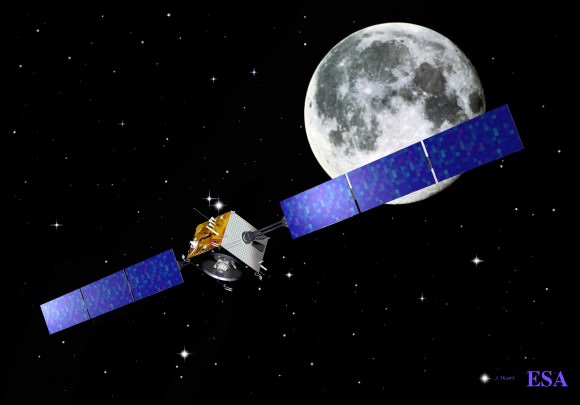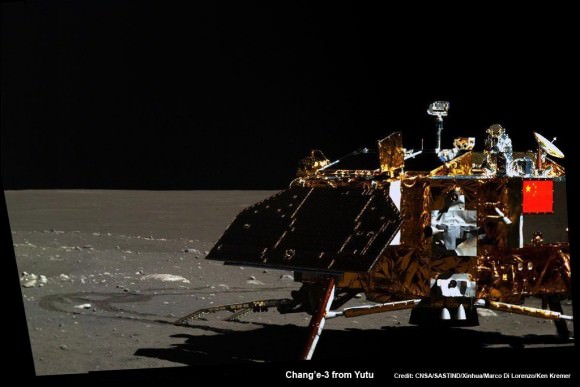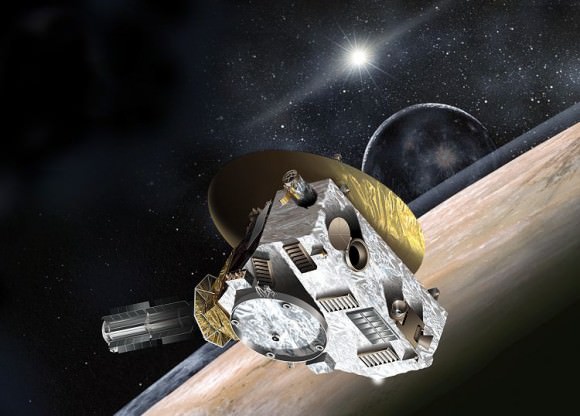How Long Can a Car Idle With Ac on
Back in 2008, Richard Branson outlined his vision for Virgin Galactic's future. Once tourists are taken into Earth orbit, information technology seems possible that space hotels could be adult for longer finish-overs in space. He then went on to mention that brusk "sight-seeing" tours to the Moon could exist started from these ultimate hotels. If we are to make travel to the Moon routine plenty to ship tourists there, the trip would need to be as short as possible.
So how long is the commute from the Earth to the Moon anyway? Homo beings and machines have made that trip on several occasions. And while some took a very long time, others were astonishingly fast. Allow's review the various missions and methods, and run into which offers the most efficient and to the lowest degree time-consuming means of transit.
Many missions have arrived in lunar orbit and landed on the lunar surface, but the ways of getting at that place are widely varying. Whether a mission uses a rocket to boom its way at that place, or a subtle ion engine to slowly edge its payload closer, nosotros have many options open to usa when nosotros travel to the Moon in the futurity. To this end, I'll requite a quick rundown from slowest to fastest flights to Globe'due south natural satellite 380,000 km abroad.
Unmanned Missions:
The slowest mission to fly to the Moon was really 1 of the most advanced technologies to be sent into space. The ESA'sSMART-1 lunar probe was launched on September 27th, 2003 and used a revolutionary ion engine to propel information technology to the Moon. SMART-1 slowly spiraled out from the Earth to arrive at its destination one year, one month and two weeks later on November 11th, 2004.

SMART-i may have been dull, but it was past far the most fuel efficient. The arts and crafts used simply 82 kg of xenon propellant for the entire mission (ending with a lunar affect in 2006). The SMART-one mission is an oddity as it is by far the longest mission to the Moon, the rest of the missions took a thing of days to reach lunar orbit.
People's republic of china's Chang'e-one mission was launched from Xichang Satellite Launch Center on Oct 24th 2007 but sabbatum in Earth orbit til October 31st when it began its transit to the Moon and arrived in lunar orbit on November 5th. The mission therefore took v days to cover the distance, using its rocket boosters. This was followed up past the Chang'e 2 orbiter, which launched on Oct 1st 2010 and arrived in lunar orbit within 4 days and 16 hours.
More recently, Chang'eastward 3 probe and lander launched on Dec. 1st, 2013 at 17:30 UTC and arrived in Lunar orbit on December 6th at 9:53 UTC. Information technology was therefore the fastest of the Chang'e missions, taking 4 days, 12 hours, and 23 minutes to reach the Moon before deplyoing its lander to the lunar surface.

However, it was the first-even unmanned mission to the Moon that was the fastest. This mission was known as the Soviet Luna 1 probe, which completed a flyby of the Moon in 1959. This basic, but pioneering probe was launched on January second and flew past the Moon by a few thousand kilometers on January 4th. Information technology merely took 36 hours to make the trip, therefore traveling an average speed of 10,500 km/hr.
Manned Missions:
The Apollo missions, which were the merely manned Lunar mission, were fairly quick in reaching the Moon. Naturally, it was the Apollo 11 mission, where Neil Armstrong and Fizz Aldrin became the start men to walk on the Moon, that made the greatest headlines. This mission began on July 16th, 1969, where a Saturn V multi-stage rocket took the astronauts from Kennedy Infinite Middle into orbit.
They reached lunar orbit later only 51 hours and 49 minutes in space, arriving on July 19th, 1969. The famous "One small stride for man…" speech would non take place until July 21st, roughly 109 hours and 42 minutes into the mission. After dusting off from the Lunar surface, the Lunar Module spent another two days, 22 hours and 56 minutes getting back to Earth. So in addition to be the first manned mission, Apollo 11 was likewise the fastest trip to the Moon where astronauts were involved.

Fastest Mission to Date:
By far, the fastest mission to fly past the Moon was NASA'sNew Horizons Pluto mission. This mission had a speedy launch, with its Atlas 5 rocket accelerating it to a a speed of about 16.26 km per second (58,536 km/h; 36,373 mph). At this rate, it simply took eight hours and 35 minutes for it to get to the Moon from Earth. Quite a good beginning for this probe, which was on its fashion to Pluto and the Kuiper Belt at the fourth dimension.
Although this is impressive, it'southward worth keeping in heed that New Horizons was not slowing down to enter lunar orbit (every bit was the instance all of the manned and unmanned mission to the Moon mentioned to a higher place). Hence, it was probably still accelerating long after it had placed the Moon in its rear view mirror (assuming it had i).
Mission concepts like the Space Launch System and Orion Multi-Purpose Crew Vehicle (MPCV) volition likewise come into play in the almost future. On December 5th, 2014, an unmanned exam of the Orion capsule took place, officially known as Exploration Flying Exam one. Having launched atop a Delta IV Heavy rocket, the sheathing reached Low Earth Orbit, achieved ii orbits of the Earth, and so splashed down once more 4.5 hours later.

During the course of the flight, EFT-one reached speeds of up to 8.9 km/s (32,187 km/h; 20,000 mph). At this velocity, an Orion mission could conceivably make it to the Moon (at an boilerplate altitude of 384,400 km) in nearly 12 hours. Manifestly, adjustments will have to exist made for weight (since it will demand a crew), and deceleration. But still, that's not a bad framework for a tourist flight.
So, when space tourism begins mounting sight-seeing tours or missions to the Moon, they will have a few options. They could offer long cruises, gently gliding to the Moon using ion engines to slowly let the tourists have in the views. Or they could opt for the exhilarating rocket ride of a lifetime, blasting tourists off into space and whipping them back in just a day or two. Hard to say which one people would prefer, only surely there are many who would pay handsomely for the opportunity.
We Have written many interesting articles about the Moon here at Universe Today. Hither'south Who Were The Start Men On The Moon?, How Many People Have Walked On The Moon?, What Is The Altitude To The Moon?, and Yous Could Fit All The Planets Betwixt The Globe And The Moon.
For more information, be sure to cheque out NASA's page on The Globe'southward Moon and Solar System Exploration Inquiry Virtual Institute
Original publication engagement April ten, 2008
Podcast (audio): Download (Duration: three:06 — 2.8MB)
Subscribe: Apple Podcasts | RSS
Podcast (video): Download (62.0MB)
Subscribe: Apple Podcasts | RSS
Source: https://www.universetoday.com/13562/how-long-does-it-take-to-get-to-the-moon/
0 Response to "How Long Can a Car Idle With Ac on"
Post a Comment